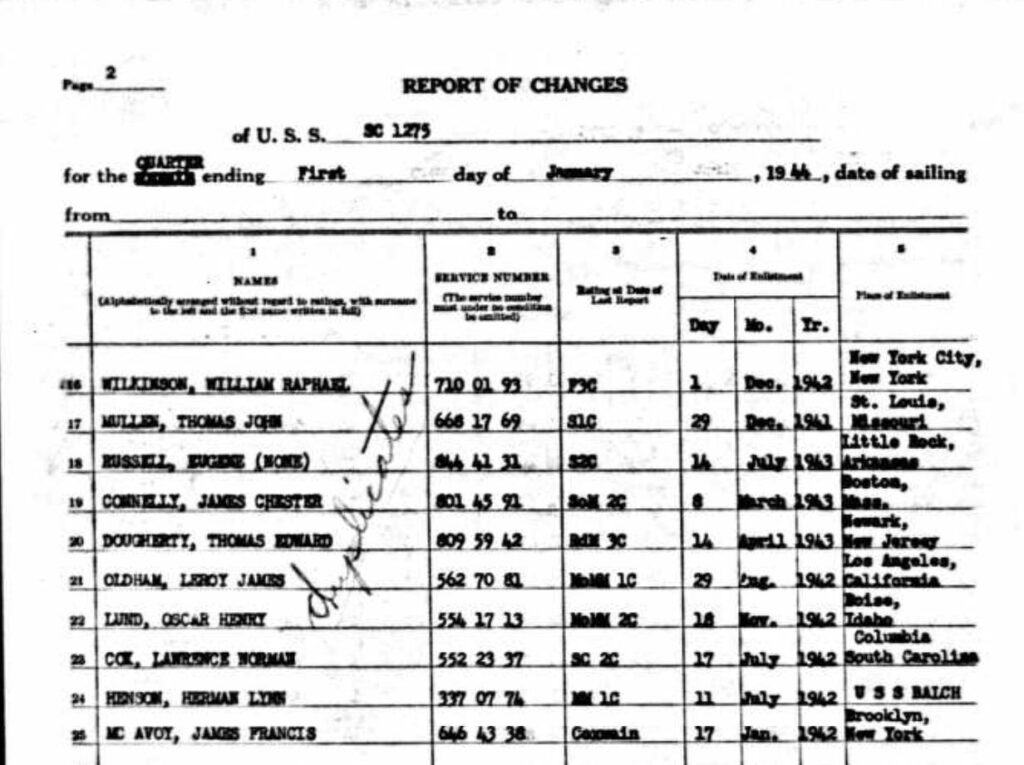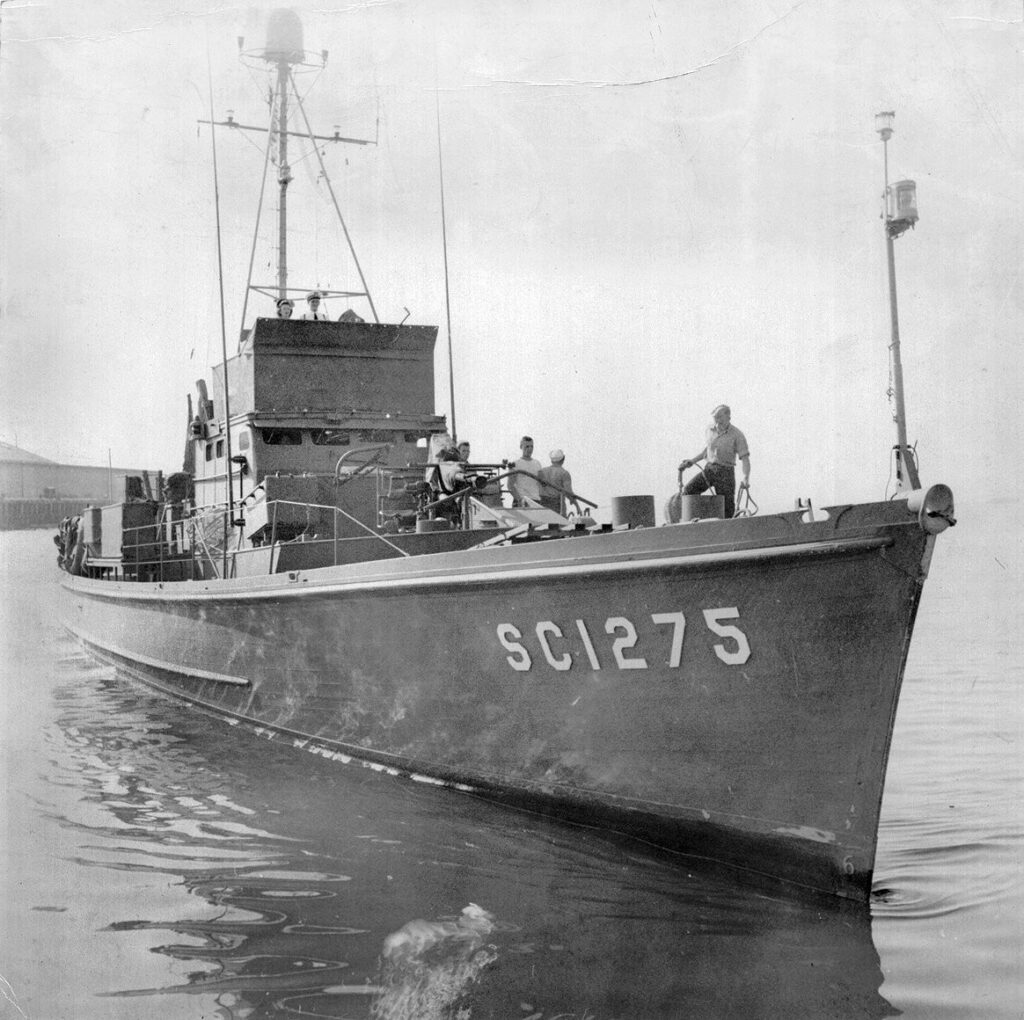My paternal grandfather, William Wilkinson, died before I was born, and after my parents’ divorce when I was 3, I had little contact with my father’s side of the family. For decades, I didn’t even know what my grandfather looked like. A few years back, a family member finally supplied me with two photos: a 1946 wedding day photo of my grandparents, and a portrait of my grandfather in his naval uniform during WWII. Up until that point, I didn’t know he had been in the navy or had been a war veteran. I finally had a face to put with the name and a little more information about this mystery man, and that satisfied my curiosity.
A couple of years ago, an Ancestry.com email alerted me that there had been a “hit” on a document that likely was connected to my grandfather. This opened a link to a page called navsource.org. I saw “William R. Wilkinson” listed at the top of a deck logbook from January 1, 1944. This required further investigation since only a middle initial was displayed. My grandfather’s middle name was Raphael, but this R initial could easily have been for Ralph, Roger, Robert, or Richard. However, after digging a bit further, I found the “date of enlistment” in the logbook matched that on an enlistment card also displayed on Ancestry.com which was most definitely connected to him. It was indeed my grandfather listed in this logbook.

The logbook page was from the Submarine Chaser 1275, and he was listed as F3C – Fireman Third Class. The first thing I did after studying that document was look at the accompanying images. One photo showed sailors atop the deck of a ship, but the ship didn’t look very large. The page explained that the SC1275 was a small wooden ship that was used to patrol around the end of a runway at an Army Air Force base in Guam. Now I knew something about where he had served. I was not aware that the US Navy had small wooden ships in the 1940s as all the ships I had read about or seen featured in documentaries about that era always seemed to be huge and made of steel.
In the mid-1950s, a teenage boy went exploring in the Sacramento River Delta, and came across a half-sunken wooden boat. He found papers aboard the ship and brought them home. He had unknowingly been playing on the wreckage of the SC1275, which had been de-acquisitioned by the Navy in 1948 and sunk by the Army Corps of Engineers to help stem erosion from a levee break. Over the course of subsequent decades, the documents changed hands a few times. The current owner thought to scan and upload them to a website, which through the wonders of technology connected the names displayed to Ancestry.com’s database.

My grandfather’s name traveled from Guam to New Zealand to the middle of a California river before making it to my computer screen. I’m happy that part of his story has now been discovered and retold. He left the service as a Machinist’s Mate Third Class as per the inscription on his headstone at Long Island National Cemetery.
Thank you for your service, grandpa, and for helping to save the world.
Ship details:
SC-497 Class Submarine Chaser:
• Laid down 5 January 1943 as PC-1275 by the Quincy Adams Yacht Yard, Quincy, MA (During this period, Mathis Yacht Bldg. Co. was renamed John Trumpy and Sons, under which name it is known today)
• Reclassified SC-1275 in April 1943
• Launched 5 June 1943
• Commissioned USS SC-1275, 17 August 1943
• Visited Auckland, New Zealand 20 – 31 December 1944
• Decommissioned in November 1945
• Struck from the Naval Register 19 December 1945
Specifications:
• Displacement 148 t.
• Length 110’ 10”
• Beam 17’
• Draft 6’ 6”
• Speed 15.6 kts.
• Complement 28
• Armament: One 40mm mount, two .50 cal. machine guns, two depth charge projector “K Guns,” two sets Mk 20 Mousetrap rails with four 7.2 projectiles and two depth charge tracks
• Propulsion: Two 880bhp General Motors 8-268A diesel engines, Snow and Knobstedt single reduction gear, two shafts.



